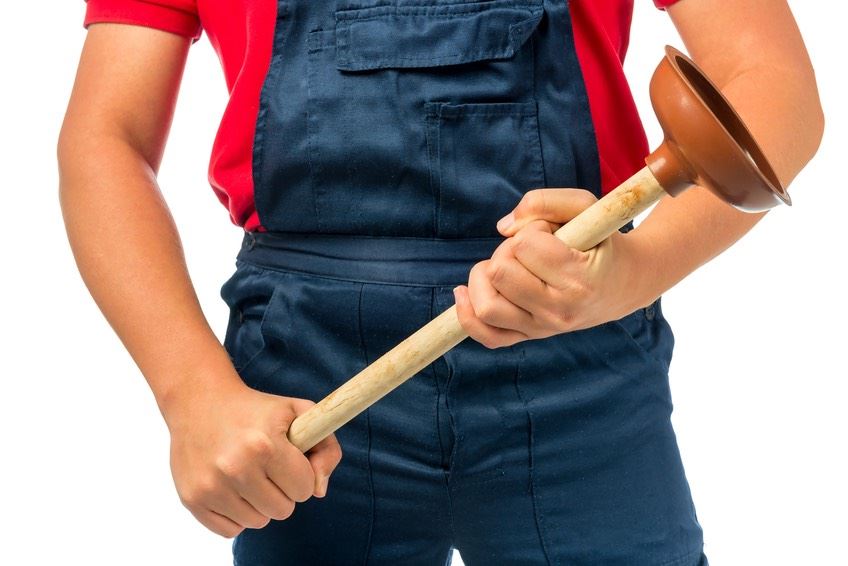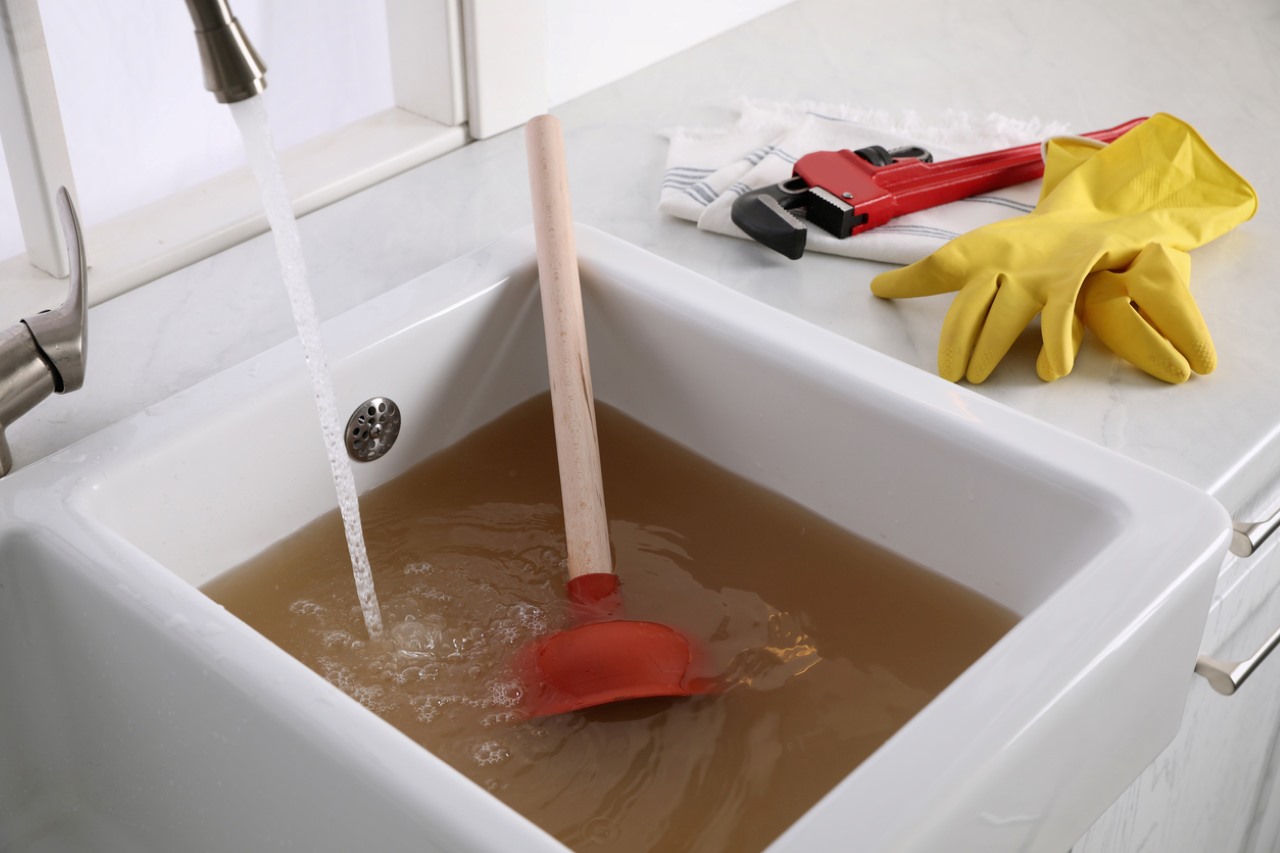How to Properly Apply Plungers and Drain Cleaners: Specialist Guidance
How to Properly Apply Plungers and Drain Cleaners: Specialist Guidance
Blog Article
The writer is making several great points on the subject of How to Unclog Your Sink with a Plunger overall in the article in the next paragraphs.

Introduction
Proper upkeep of family drains is important for preventing obstructions and guaranteeing smooth water circulation. One of the trick tools in every house owner's toolkit is the plunger, together with various drain cleansers designed to deal with persistent clogs successfully. This article explores exactly how to make use of plungers and drain cleaners successfully to maintain your drains flowing easily.
Section 1: Recognizing Bettors
Sorts of Plungers
There are several types of plungers available, each developed for different kinds of drains and clogs. One of the most common kinds consist of mug bettors, flange plungers, and accordion bettors.
Just How Plungers Job
Bettors work on the principle of producing pressure and suction to dislodge blockages. When appropriately used over a drainpipe, they create a vacuum that can pull out debris or break up blockages.
Choosing the Right Plunger
Picking the appropriate bettor relies on the sort of drainpipe and the nature of the blockage. Cup plungers are ideal for sinks and tubs, while flange bettors are much better fit for toilets as a result of their layout.
Usual Errors with Bettors
Preventing these errors makes certain efficient plunging: improper seal around the drainpipe, insufficient force, and unclear surrounding particles.
Area 2: Using Plungers Successfully
Prep work
Prior to plunging, make sure the bettor covers the drainpipe completely and forms a tight seal. Clear any type of visible particles around the drainpipe opening.
Method
Begin with mild diving movements to construct suction. Rise stress progressively, making use of a constant rhythm. Repeat as essential till the drainpipe removes.
Fixing Tips
If plunging doesn't function, attempt changing the seal, applying oil jelly for a better seal, or making use of a different kind of bettor.
Area 3: Recognizing Drainpipe Cleaners
Types of Drain Cleaners
Drain cleansers can be chemical or chemical. Chemical cleansers make use of solid chemicals to liquify blockages, while enzymatic cleaners use all-natural enzymes to break down raw material.
Just How Drainpipe Cleansers Work
Chemical cleansers respond with blockages to dissolve them, while enzymatic cleansers break down natural products like hair and oil without harming pipelines.
Safety and security Considerations
Always use handwear covers and eye security when using chemical drain cleansers. Make sure adequate ventilation and adhere to supplier instructions very carefully.
Eco-Friendly Alternatives
Take into consideration making use of vinegar and cooking soda or enzyme-based cleansers for environmentally friendly options that are more secure for pipes and the setting.
Section 4: Utilizing Drainpipe Cleaners Properly
Application Techniques
Put chemical cleaners straight right into the drainpipe opening. Allow them to help the advised time before flushing with warm water. Chemical cleansers should sit over night.
Preventative measures
Avoid mixing different types of cleansers, as this can generate poisonous fumes. Never ever make use of chemical cleansers in conjunction with a bettor, as splashing can happen.
Dealing With Stubborn Clogs
For persistent blockages, think about utilizing a plumbing serpent or calling a specialist plumbing professional to stop damage to pipelines.
Verdict
In conclusion, recognizing how to use bettors and drainpipe cleansers properly is crucial for preserving healthy pipes systems. By choosing the right tools and techniques, house owners can deal with small blockages and protect against significant pipes issues down the line.
How To Properly Use A Plumbing Snake To Clear Drains
When any drain clogs in our home arise, we tend to gravitate toward the plunger and little else. In cases where the plunger and its vacuum-created pressure are not able to clear clogs, many immediately move to harmful chemicals or simply call their plumber to fix the issue.
we’re happy to help with all drain cleaning needs and concerns. This includes informing you on a few other home remedies you may have at your disposal for minor to moderate clogs, one of which is the use of a plumbing snake. Many people have never used one of these before – let’s go over the steps to take when your drain clogs and you have a plumbing snake available.
Attempt Plunger Use
The first step here, as we noted above, should indeed be to grab your plunger when you notice a drain clog and attempt to resolve it this way. If you’re unsure how to use a particular type of plunger, our plumbers can answer any questions you have. If this doesn’t do the trick, however, you move on to the snake.
Locate And Prepare Snake
A plumbing snake is a metal or plastic device that’s generally about a quarter of an inch thick. It’s design with significant extensions, meant to reach down into your clogged drain and push the clog out. Snakes also contain drain augers that will latch onto and push stubborn blockages.
If your plunger doesn’t clear a clog, locate your snake and bring it to the drain in question. We also recommend keeping a bucket nearby to collect the clog once you pull it out, plus we’d advise wearing goggles and possibly protective gloves.
Feed Snake
Once you’re ready to go, feed the snake slowly down the drain, using the crank device it comes with to keep it moving until it finds the clog. Once this happens, much of the clog will be latched onto the coil so you can pull it out, while the rest will simply break up and flow downward.
Detach Debris
Remove the snake slowly from the drain, and once you’ve done so, pick off any debris that’s stuck to the coil. This is another area where wearing gloves is a must.
Flush Drain
Finally, take a few minutes to ensure the snake has done its job correctly. If you’ve been using it on a toilet, flush the toilet a couple times and make sure everything flows well. If you’ve used it on a different drain, flush it with some room temperature water.
https://www.mybuddytheplumber.com/blog/how-to-properly-use-a-plumbing-snake-to-clear-drains/

Application Techniques
Put chemical cleaners straight right into the drainpipe opening. Allow them to help the advised time before flushing with warm water. Chemical cleansers should sit over night.
Preventative measures
Avoid mixing different types of cleansers, as this can generate poisonous fumes. Never ever make use of chemical cleansers in conjunction with a bettor, as splashing can happen.
Dealing With Stubborn Clogs
For persistent blockages, think about utilizing a plumbing serpent or calling a specialist plumbing professional to stop damage to pipelines.
Verdict
In conclusion, recognizing how to use bettors and drainpipe cleansers properly is crucial for preserving healthy pipes systems. By choosing the right tools and techniques, house owners can deal with small blockages and protect against significant pipes issues down the line.
How To Properly Use A Plumbing Snake To Clear Drains
When any drain clogs in our home arise, we tend to gravitate toward the plunger and little else. In cases where the plunger and its vacuum-created pressure are not able to clear clogs, many immediately move to harmful chemicals or simply call their plumber to fix the issue.
we’re happy to help with all drain cleaning needs and concerns. This includes informing you on a few other home remedies you may have at your disposal for minor to moderate clogs, one of which is the use of a plumbing snake. Many people have never used one of these before – let’s go over the steps to take when your drain clogs and you have a plumbing snake available.
Attempt Plunger Use
The first step here, as we noted above, should indeed be to grab your plunger when you notice a drain clog and attempt to resolve it this way. If you’re unsure how to use a particular type of plunger, our plumbers can answer any questions you have. If this doesn’t do the trick, however, you move on to the snake.
Locate And Prepare Snake
A plumbing snake is a metal or plastic device that’s generally about a quarter of an inch thick. It’s design with significant extensions, meant to reach down into your clogged drain and push the clog out. Snakes also contain drain augers that will latch onto and push stubborn blockages.
If your plunger doesn’t clear a clog, locate your snake and bring it to the drain in question. We also recommend keeping a bucket nearby to collect the clog once you pull it out, plus we’d advise wearing goggles and possibly protective gloves.
Feed Snake
Once you’re ready to go, feed the snake slowly down the drain, using the crank device it comes with to keep it moving until it finds the clog. Once this happens, much of the clog will be latched onto the coil so you can pull it out, while the rest will simply break up and flow downward.
Detach Debris
Remove the snake slowly from the drain, and once you’ve done so, pick off any debris that’s stuck to the coil. This is another area where wearing gloves is a must.
Flush Drain
Finally, take a few minutes to ensure the snake has done its job correctly. If you’ve been using it on a toilet, flush the toilet a couple times and make sure everything flows well. If you’ve used it on a different drain, flush it with some room temperature water.
https://www.mybuddytheplumber.com/blog/how-to-properly-use-a-plumbing-snake-to-clear-drains/

We had been shown that report about How To Use Your Toilet Plunger Correctly in 5 Easy Steps through a friend on our other blog. Loved our content? Please quickly share it. Let somebody else locate it. Kudos for being here. Return soon.
Get Estimate Report this page